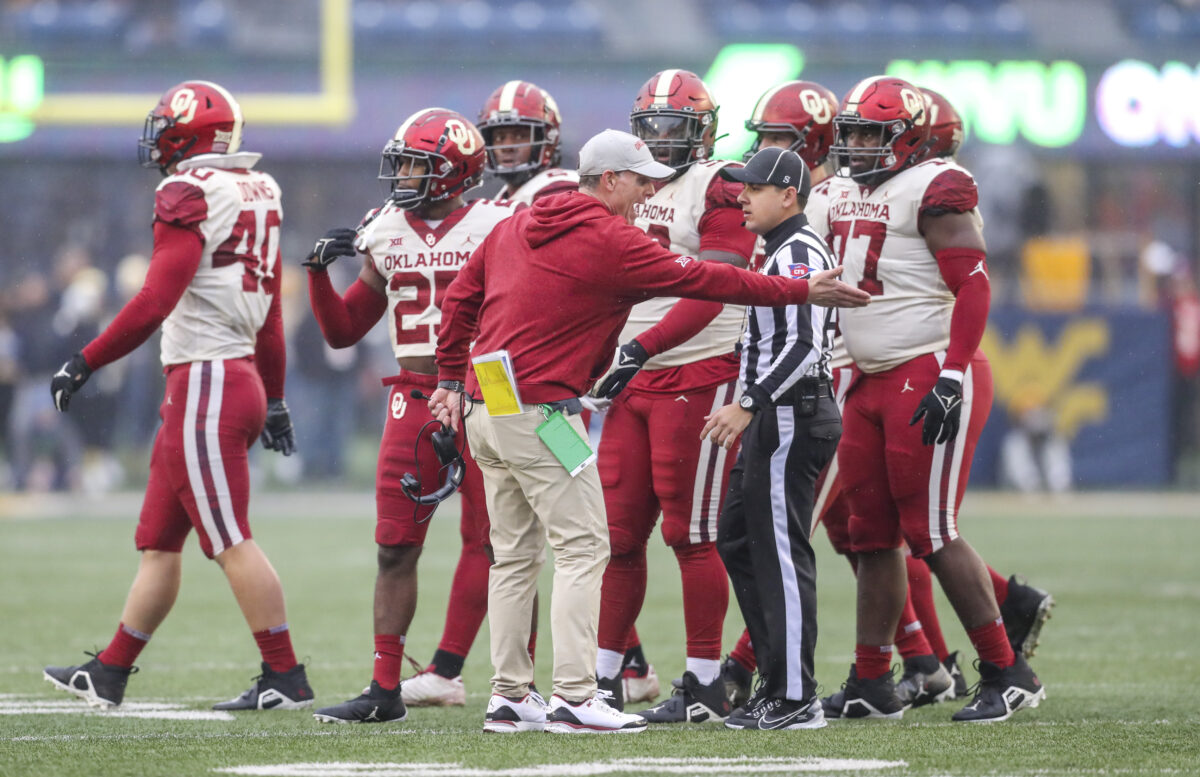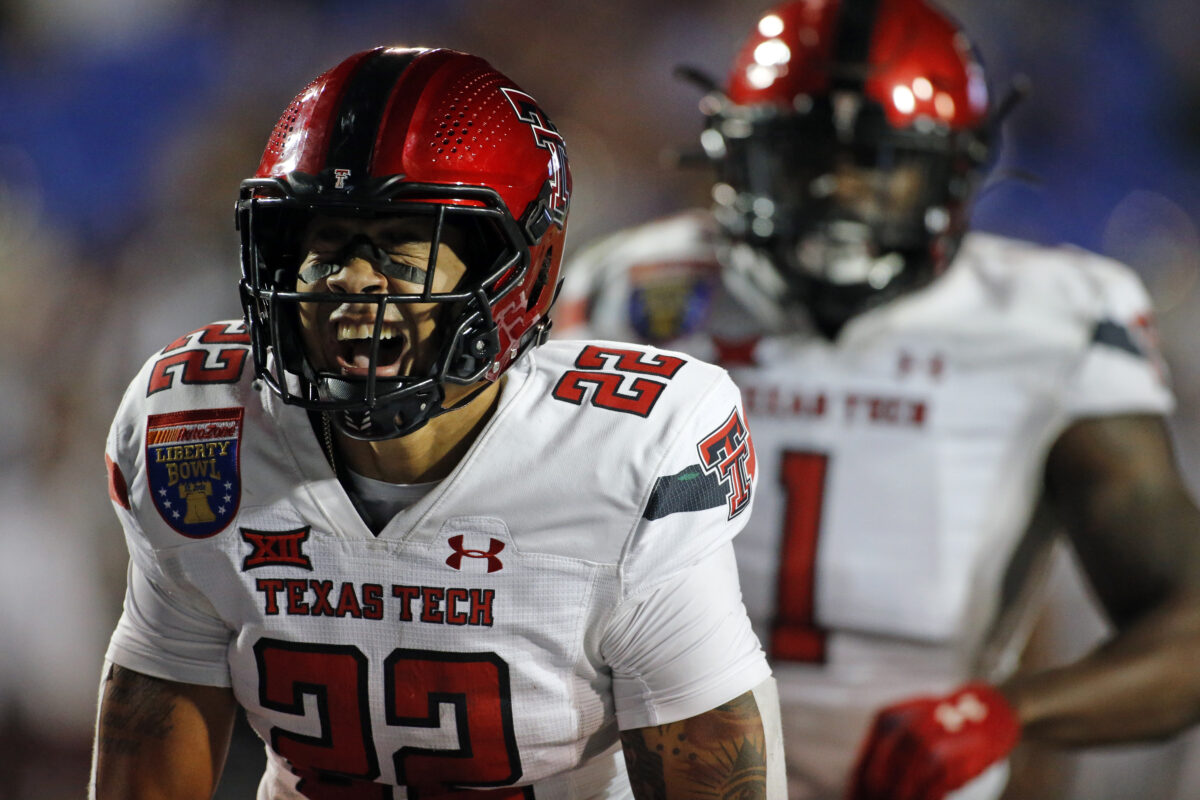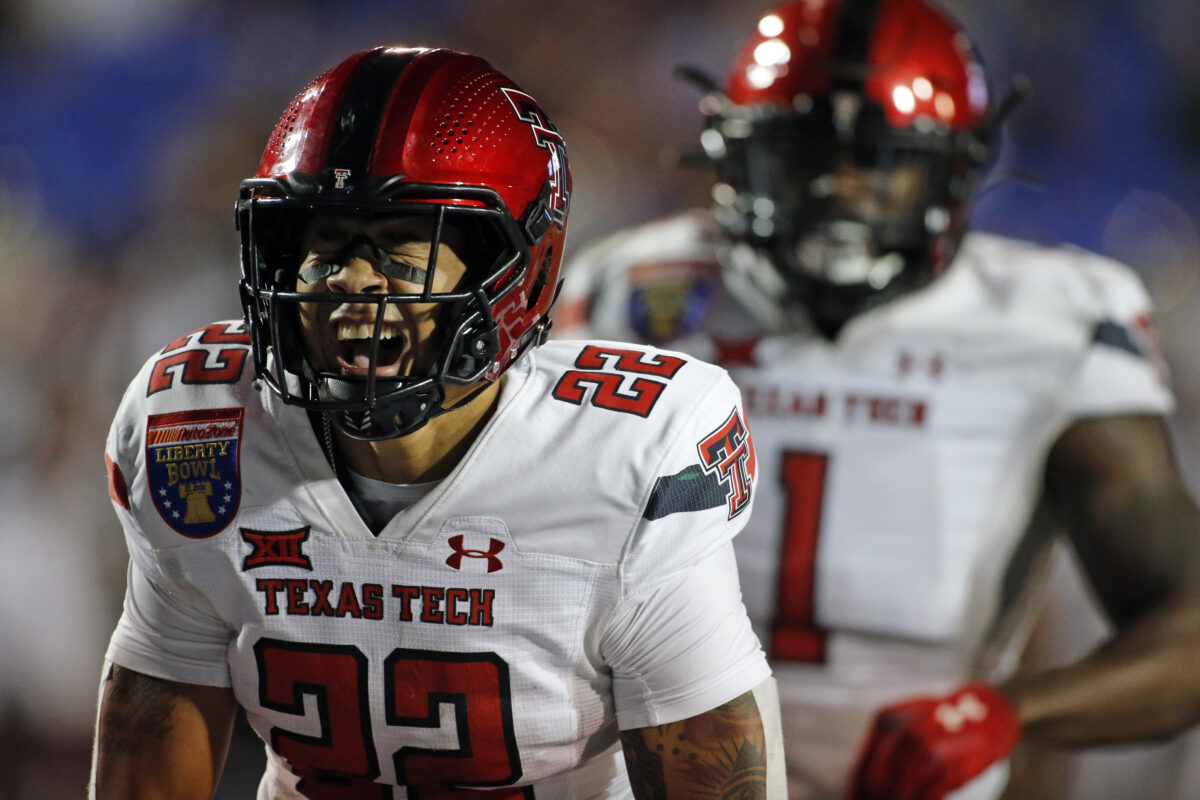The transfer portal has created a bit of a chaotic element in the world of college football. Players that coaches expect to be around for three to five years may depart after just one season with the immediate eligibility transfer rule.
At the same time, there’s beauty in the transfer portal as well. A team like the Oklahoma Sooners, coming off its worst season since 1998, isn’t forced to stand pat and wait on its players to develop.
After the 2022 season, in which the defense ranked in the bottom 30 of college football and allowed 30 points per game, the Sooners are aggressively improving the talent on the defensive roster for 2023.
[autotag]Brent Venables[/autotag] and the Oklahoma Sooners have added six players on the defensive side through the transfer portal. And that doesn’t include [autotag]Kendel Dolby[/autotag], who they brought in as a junior college addition through the 2023 recruiting class. So far, they’ve earned transfer commitments from:
- [autotag]Jacob Lacey[/autotag], DT from Notre Dame
- [autotag]Dasan McCullough[/autotag], Edge/LB from Indiana
- [autotag]Reggie Pearson[/autotag], S from Texas Tech
- [autotag]Trace Ford[/autotag], DE from Oklahoma State
- [autotag]Rondell Bothroyd[/autotag], DL from Wake Forest
- [autotag]Davon Sears[/autotag], DT from Texas State
That’s a lot of experience and a lot of production at the collegiate level to add to the defensive depth chart for 2023.
Rondell Bothroyd brings 14 sacks and 26.5 tackles for loss over the last two seasons to Norman. Dasan McCullough had a standout season as a true freshman for the Hoosiers and was an ESPN true freshman All-American. We were witnesses to the thunderous tackling ability that Reggie Pearson brings to the Sooners’ secondary in Oklahoma’s loss to Texas Tech in 2022. Jacob Lacey didn’t play much for Notre Dame in 2022, but he was effective in the three games played.
Trace Ford has battled injuries in Stillwater but has been productive when he played. In his first two seasons at Oklahoma State, Ford procured 7.5 sacks and 8.5 tackles for loss as a true freshman and sophomore. Davon Sears has taken the winding road to the Power Five after spending time at Ellsworth Community College and Texas State. He was an effective interior defensive line presence for the Bobcats, even if the numbers aren’t eye-popping.
The Sooners have some defensive building blocks to work with, including [autotag]Ethan Downs,[/autotag] [autotag]Danny Stutsman[/autotag], [autotag]R Mason Thomas[/autotag], [autotag]Billy Bowman[/autotag], [autotag]Isaiah Coe[/autotag] and [autotag]Jordan Kelley[/autotag].
They have some young guys from the 2022 recruiting class that will have a chance to be impact players in 2023, such as [autotag]Jaren Kanak[/autotag], [autotag]Kobie McKinzie[/autotag], [autotag]Kip Lewis[/autotag], [autotag]Gracen Halton[/autotag], [autotag]Gentry Williams[/autotag], [autotag]Robert Spears-Jennings[/autotag] and [autotag]Jayden Rowe[/autotag]. The Sooners have signed arguably the best defensive recruiting class they’ve had in years.
However, Venables and his coaching staff aren’t waiting around. After a 6-7 season, they felt the mandate to make significant additions to the roster to improve the talent, and they’ve done that. It doesn’t mean Oklahoma will contend for the Big 12 title and the College Football Playoff, but they’re not sitting back to see if the young talent will take the steps this offseason to be the difference makers the Sooners’ defense needs to make significant strides in 2023.
They’ll have a lot to prove when they get into the Big 12 part of their schedule next season. Nonconference play will not give us much of an indication of where this defense is next season. However, with what they’ve done in the transfer portal, the defense should be on an upward trajectory.
[autotag]Brent Venables[/autotag] and his staff are doing everything they can to fix the defense, and their work in the transfer portal is indicative of those efforts.
[listicle id=76629]
[listicle id=78488]
[mm-video type=playlist id=01eqbz7cqqgxy50qwt player_id=01eqbvp13nn1gy6hd4 image=]
Contact/Follow us @SoonersWire on Twitter, and like our page on Facebook to follow ongoing coverage of Oklahoma news, notes, and opinions. Let us know your thoughts, and comment on this story below. Join the conversation today. You can also follow John on Twitter @john9williams.












